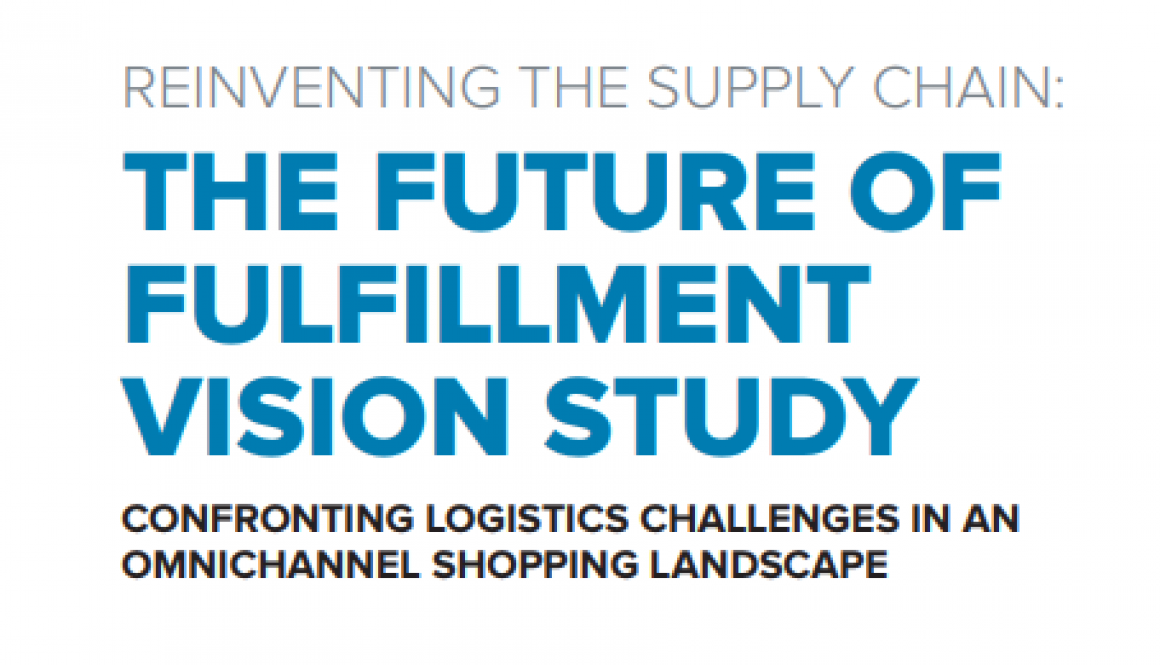
shopping

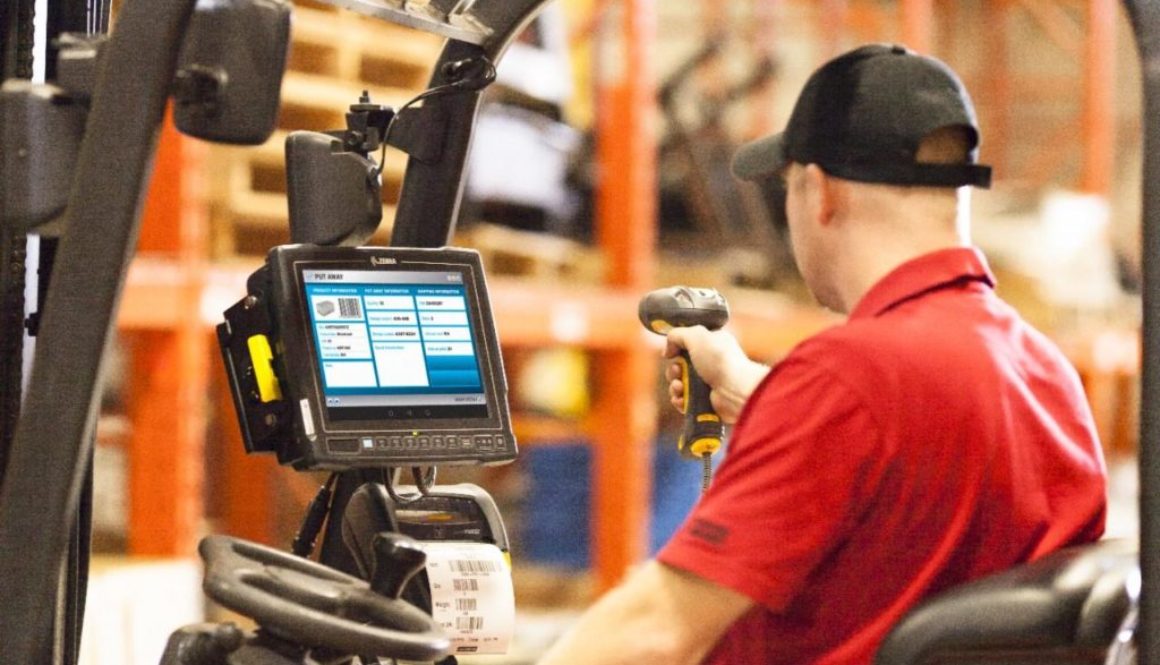
5 Benefits Of Long-Range Barcode Scanning Technology In The Warehouse
barcodebrad Warehouse long-range, shopping, solutions
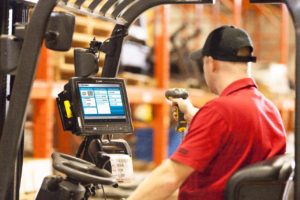
With the capabilities of technology continually increasing, along with escalating levels of consumer demand, warehouses are undergoing a period of unprecedented change.
It’s a fact, people want access to their goods faster. That will never change. Warehouses want to meet that demand and facilitate the provision of an efficient service. Businesses are restructuring and incorporating more cost effective and efficient technology to accelerate and expand operations.
Research
From research conducted regarding the state of the warehousing industry, one of warehouse’s top investment priorities was equipping staff with sophisticated technology. Sophisticated technology might mean mobile devices, barcode scanning devices and interconnected solutions (Internet of Things).
However, as consumer demand increases, warehouses require more than just proficient technology to streamline workflows and provide greater item visibility. Warehouses also need more stock, which in turn, takes up more space. To alleviate this problem, many warehouses are now being restructured to utilize vertical space. Vertical space increases inventory capacity and reducing the overall cost of space.
The Problem
But this also presents a problem in itself. Higher inventory shelves makes data acquisition difficult for standard, short-range barcode scanners. When operators need to conduct regular stock counts or pick specific items from these high inventory shelves, it is of the utmost necessity that they are equipped with a sophisticated, long-range barcode scanner solution capable of acquiring the required information. A long-range barcode scanning solution provides warehouse operators with the ability to acquire product information at any point with minimal effort. The proper barcode solution reduces time taken, which in turn, reduces the overall cost of operations.
In essence, long-range scanning technology provides various benefits over traditional short-range scanners.
Speed
Long-range barcode technology enables forklift drivers to scan quickly and safely from the cab, speeding up the data acquisition process. Naturally, this increases productivity and efficiency overall. Generally, long-range barcode scanners are capable of accurately discerning barcodes up to as much as 50 feet away, under numerous layers of shrink-wrap, making them vital for large-scale operations where time is sensitive.
Continuous performance
Irrespective of the operating environment, long-range barcode scanning technology will continually perform. Even in dimly lit working environments, their accuracy and precision are not reduced in the slightest. In addition, long-range scanners scan sequentially. This meaning that the operator can hold down the trigger to identify multiple items.
Resilience
No matter what the conditions, from regular to irregular temperatures, barcode scanners in general will continue to operate. Furthermore, most modern barcode scanners consider the possibility of being dropped. This is why scanners have an extreme level of shock tolerance and will function normally after repeated drops to concrete.
Error reduction and intuitive operation
Barcode scanning devices in general will reduce data acquisition errors significantly. However, in a vertically structured warehouse, short-range barcode scanners may encounter some problems due to their range. Long-range scanners however, generally utilize omnidirectional scanning technology. Omnidirectional scanning means that lining up the scanner and the barcode is unnecessary, reducing time taken to acquire information. Combining the omnidirectional support with their long-range capability means the operator no longer has to pace up and down the warehouse floor continuously to scan goods.
Short range and long range
A misconception would be to believe that long-range scanning technology is only applicable at range. This is far from the truth. In reality, long-range scanners offer excellent capability at short range as well. They can be used effectively across a range of distances, from an item centimeter away, to one on the highest shelf in the warehouse. Sophisticated long-range scanners provide operational capacity at both short and long-range, eliminating the need to buy multiple devices and improving return on investment.
Warehouse Onus
Consumer demand pressure will only increase with time. The onus is on warehouse operations to become ever more sophisticated and innovative in effective and efficient use of space.
The integration of simple, yet sophisticated, long-range scanning technology, will reduce costs, increase profits and streamline operational procedures. As long-range scanners can operate at various ranges, their inclusion in the data acquisition process will eliminate the need for additional products, and provide operators with the capabilities they need on the ground to quickly identify items.
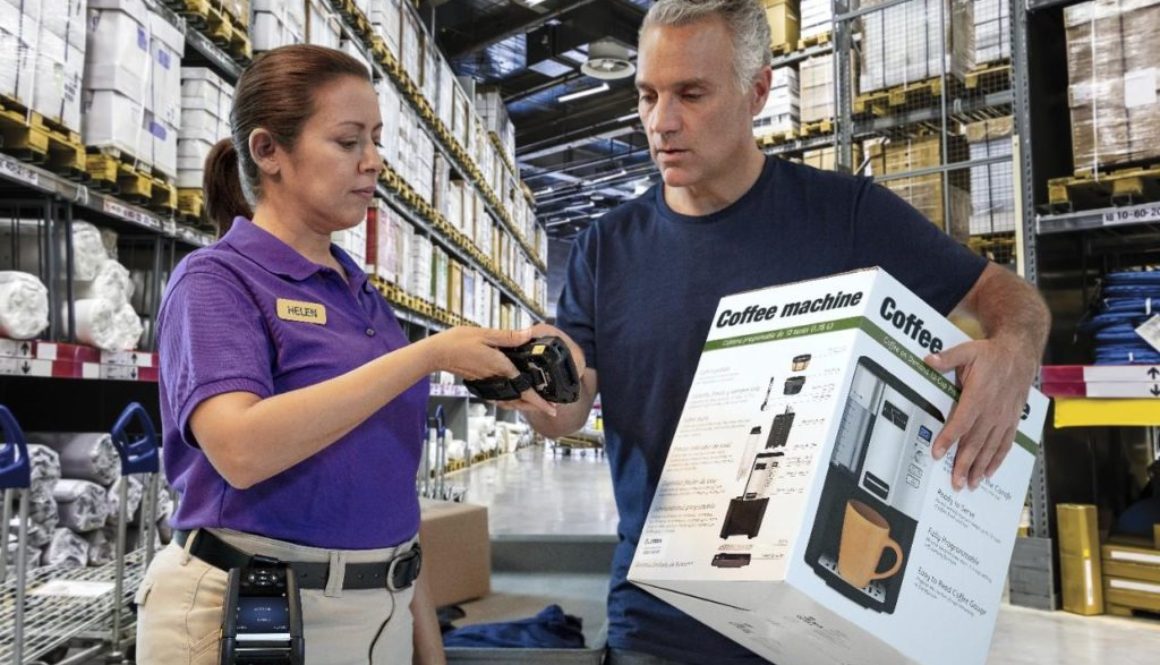
How To Optimize Your Return Process
barcodebrad Supply Chain, Warehouse connected devices, mobile, retail, returns, shopping, stocking, warehouse
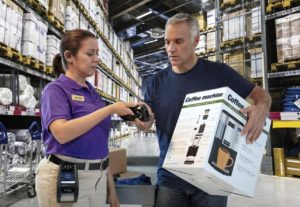
Online Returns
Customer returns items has become an essential customer service function in recent years. The rise of online shopping has led to an increase of customers buying items over the internet. Customers may even do this without being totally sure about the purchase because of the expectation they can return them once they’ve arrived.
Online returns now amount to as much as one-third of sales, according to retail consultant Kurt Salmon Associates. The average return rate for fashion items bought online is 23%, according to e-tail trade association IMRG.
Historically, businesses have always been responsive to returns. Expectations among customers has increased to the point of being able to return as easily as buying the item in the first place. This new consumer mindset has put a far bigger emphasis on handling returns as a central customer service function, rather than an add-on.
Moreover, increasing choice over delivery options has led to more customers expecting the same service when they return items. Delivery options may include free and same day delivery, rather than the historically drawn out process returns has often been viewed as.
Dealing with a higher number of returns has put more financial and time pressures on the supply chain. Businesses are now battling to get returned items picked up, logged, checked for damage and back in circulation as soon as possible.
Returns As A Customer Service
As with all customer service functions, increasing the choice for consumers and making return processes as easy as possible is always front of mind. By continuously optimizing delivery and returns functions, there’s a great opportunity to stand out amongst your competitors. These improvements could include reducing pick up times and expanding the number of locations where customers can drop items off.
For many retailers, returned items now represent the single largest ‘supplier’ to their business. Therefore, the need to streamline the returns process so it operates as efficiently as the rest of the business has become a real challenge.
The technology to improve this service already exists within the supply chain. Stock monitoring and recording and delivery tracking are already central components of e-commerce in particular.
Optimizing return processes as a business function
Checking returned items in and placing them back in circulation quickly is mounting a serious commercial challenge to the bottom line of many businesses due to the sheer volume of daily returned items. Nearly a quarter of sales end up not being sales at all.
One thing that businesses must be able to do is log returned items and redistribute them quickly, often at a reduced cost. Understanding how to evaluate the condition of returned items is essential to ensuring minimum disruption.
Most returned items cannot be resold at the initial sales price, which means businesses are taking a double hit. Not only in the cost of the return and reduced sale price, but also from the costs of getting items back in circulation.
It is key to ensure returns policies and processes are as streamlined and effective as possible to deliver the best business result from the increasing customer practice. Returns processes is something all businesses will have to become more proficient at given that e-commerce is only likely to grow in popularity in the coming years.
Improving communication and treating a business’ supply chain as a single entity, rather than a collection of separate points will help to reduce costs and identify which areas can be improved on.
The Supply Chain As A Network
Complete visibility across the entire supply network is vital for businesses. Creating a more transparent and ‘joined up’ return process is the only way a company can survive in the face of increasing returns. As a reminder, the technology to do this already exists in the form of stock monitoring, mobile communication and tracking. Businesses must be willing to change their mind set when it comes to returns, and understand how to take advantage of these different elements as a single function.
The average returned purchase in the UK goes through seven pairs of hands before it is listed for resale, according to a report in the Financial Times. That amounts to an incredible amount of waste in the supply chain and disruption to getting products back on sale.
Connected technology allows for items to be scanned anywhere in the country. From there, the item is instantly uploaded to a central point, like a distribution warehouse. Before it is returned to the warehouse, managers should reassign where the item needs to be sent.
This process is much more streamlined, and boosts business efficiency. In addition, it improves the customer service element of returns by making it easier for one customer to return an item and get their money back. At the same time, a business place the item where it needs to be faster, and back into circulation.
Dealing with returns has become an essential business function and customer service requirement in the modern business world. Those that fail to grasp this fact are only going to fall further behind the competition as the expectations on simple returns increases.

Inside the Minds of Today’s Shoppers
seanpars98 Retail bar code, barcodes, mpos, pos, retail, sales, shopping, tpos

Every retailer wants to get inside the heads of shoppers. How are consumers making buying decisions? Are they showrooming items in-store and buying online? Are in-store associates giving them the help they need—or do shoppers know as much or more than sales associates? Newly released data from our 8th annual Global Shopper Study lifts the veil on the minds of today’s connected shoppers, revealing what they want when they shop, whether it’s online or in stores.
New Practices
Consumers today are conjoined with their mobile devices before, during, and after the shopping experience. It’s natural that they reported Wi-Fi and in-store, location-based mobile coupons as top priorities. Shoppers use Wi-Fi in store to check competitor websites for lower prices and read product reviews. Those surveyed also named shopping maps and associate assistance as other areas of interest in the survey.
Expectations
Consumer expectations are higher than ever and the role of technology has never been greater. Consumers feel so empowered by information from their mobile devices. Thirty-four percent of them report feeling more connected to real-time information than to in-store associates. Yet, consumers still value the personalized touch from those employees. More than 64 percent of shoppers said they would be willing to purchase more merchandise if they received better customer service. In essence, shoppers today want it all—personalized attention from store personnel and real-time information that is tailored to their shopping experience.
Expectations should be high because today’s technology is designed for a more personalized, high-touch shopping experience. Mobile and retail technology empowers shoppers to make informed decisions like never before and frees up associates to deliver the highest level of service. In-store associates can use technology to access product inventory information, delivery options, or check out customers via mobile payment kiosks. These advancements are driving more than 75 percent of shoppers to say they feel good about shopping in stores, with three in ten reporting they would prefer to go into a retail store to pick up an item purchased online rather than having it delivered to their home.
Evolution
Brick-and-mortar shopping is evolving to meet changing demands of consumers. Imagine entering a store and being greeted by name with a special offer on the item you came to purchase. Consumers are coming to expect this kind of personalization when they share their information with retailers. Nearly eight in ten shoppers said they are willing to hand over personal data to retailers. They value those who use the data to offer them targeted deals and better prices.
One thing about shopping that will likely never change is that consumers still love getting a deal. They want to feel smart and informed about their purchasing decision. More than half of the surveyed shoppers reported showrooming items in stores before buying online. And that’s not limited to just American shoppers. Our survey extended to Singapore, China, Australia, Thailand, and beyond.
No matter the locale, it’s almost certain that shoppers today will share the good, the bad, and the ugly about their shopping experience. While more than half of shoppers surveyed think technology enables retailers to improve the shopping experience, you can be sure you’ll hear about it if they don’t.
